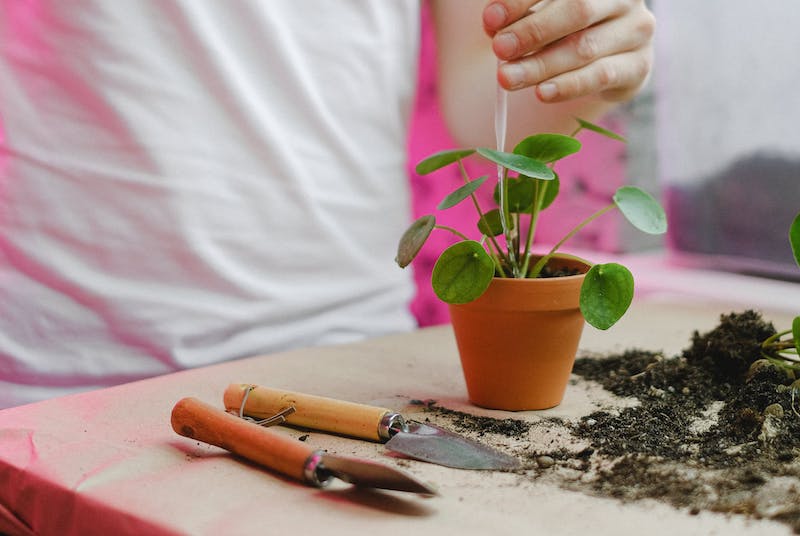Pilea peperomioides, also known as friendship plant, is a fast-growing houseplant known for its unique foliage. Depending on the variety, Pileas can have round, green leaves or intricately patterned silver, burgundy, or green foliage. Repotting is necessary every 1 to 2 years to give the roots room to grow and spread.
This low-maintenance plant has medium water needs, and a container with drainage is vital to growing a healthy pilea. Too much dampness will harm the roots and invite pests, like fungus gnats, so excess water must be allowed to drain. Repotting is also an opportunity to switch the container to match your space. Pileas do best in nursery pots placed inside a cover pot or in a decorative planter with drainage.

Potting Pilea
Plants need time to acclimate to a new environment, so don’t rush to repot a new pilea unless the plant shows signs of stress. A new pilea can stay in the nursery pot if the roots are not growing through the drainage holes or encircling the root ball. A healthy pilea in a nursery pot can be placed in a decorative cache pot. You can upgrade to a new decorative planter if the plant needs a larger container.
When repotting a pilea, the first thing to do is prepare the new container so the plant can go directly into its new pot. Select a container 1 to 2 inches larger than the current pot and fill it part-way with rich, well-drained potting mix. Repotting is a necessary part of plant care, and the process can be stressful for plants, particularly for pilea. Take care when repotting pilea to minimize contact with the roots. Gently slide the pilea out of the container and place it in the prepared pot. Fill the spaces around the root ball with potting soil and firmly press the soil into place.

Repotting Pilea
A pilea plant needs a new container when it is root bound or has outgrown its existing container. Signs of a root-bound plant include roots protruding from the drainage holes or appearing above the soil. Slow growth is another sign that the roots have no room to spread or the soil has no nutrients to support new growth. Fix a root-bound plant by repotting it into a larger container.
Since repotting can be stressful, it’s best to only repot a pilea when necessary. Other necessary times to repot a plant would be if the current pot is broken or damaged or if you have recently propagated cuttings ready for a container. You can repot a plant into a decorative planter that matches your space, but consider growing your pilea in a nursery pot and using a cover pot, so you can change the cover pot whenever you want to switch up the look.
Best Soil For Pilea
Pilea houseplants appreciate rich, well-drained, and quick drying soil. Most general potting mixes work well, especially if extra perlite is added for drainage. A succulent or cactus blend will work well for pilea without any modifications.
Pilea Drainage
Too much moisture damages pilea roots, so the potting mix must shed excess water, and the container should drain easily. Always empty water from a saucer or cover pot so the soil can dry out. If the soil stays wet, the plant may develop root rot.
 |
Author Alison Cotsonas - Published 11-15-2023 |
